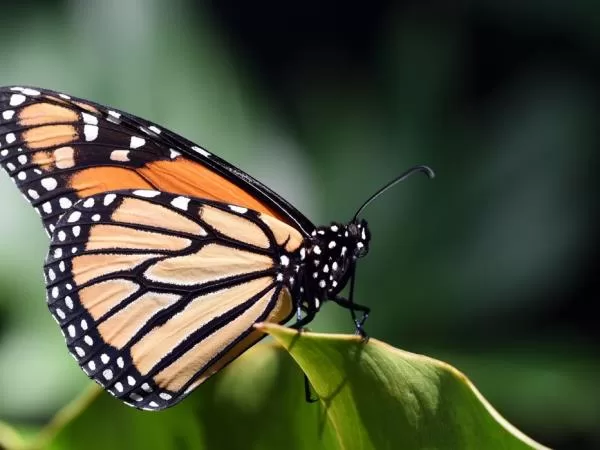
Spreading Awareness: Educating Others on Monarch Butterfly Conservation
1. Introduction:
Monarch butterflies are not only a symbol of natural beauty, but they also play a crucial role in pollination, affecting ecosystems and agriculture. However, their populations have been rapidly declining in recent years due to habitat loss, pesticide use, and climate change. In this post, we’ll explore how you can make a significant impact in helping them thrive.
2. Plant Native Milkweed:
Planting native milkweed species is vital to providing a breeding ground for monarchs. Native varieties, such as Common Milkweed (Asclepias Syriaca) and Swamp Milkweed (Asclepias Incarnata), are particularly crucial for monarch larvae. When selecting milkweed, make sure to choose varieties native to your specific region to ensure that the plants thrive and provide proper nutrition to caterpillars.
3. Grow Nectar-Rich Flowers: 🌼
To keep monarchs energized for their long migrations, they rely on nectar-rich flowers. Try planting a mix of perennials and annuals that bloom throughout the year. Flowers like milkweed, butterfly bush (Buddleia), bee balm (Monarda), and asters are favorites among monarchs and will provide sustenance through the seasons.
4. Protecting and Promoting Pollinator Action: The Key to Monarch Conservation and Other Ecosystems 🦋

Some species on our planet play a crucial role in preserving and maintaining ecological balance, ensuring the survival of various forests and habitats. Pollinators are an essential group of animals, including insects like bees, butterflies, and dragonflies, as well as birds such as hummingbirds. They transport pollen from one flower to another, promoting plant reproduction, aiding in forest regeneration, and even contributing to the recovery of deforested areas.
Beyond their role in pollination, some of these animals also serve other ecological functions. Dragonflies, for instance, are natural predators of small insects, helping with biological pest control and acting as bioindicators of environmental quality. Hummingbirds, on the other hand, are exclusive pollinators of the Americas, responsible for spreading pollen between different flowers as they search for nectar. Some species have highly specialized relationships with certain plants, forming an ecological interaction called proto-cooperation, where both organisms benefit mutually.
5. Avoid Harmful Pesticides: 🚫🧪
Protecting Monarchs and Other Pollinators 🐝🐦🐞
Chemical pesticides don’t just harm harmful pests—they can also have devastating effects on beneficial species, including monarch butterflies and other essential pollinators. By targeting insects indiscriminately, pesticides interfere with the feeding habits of monarchs, disrupt the natural development of caterpillars, and kill pollinators vital to our ecosystems.
To protect these important species, consider switching to organic alternatives. Neem oil, companion planting, and natural pest control methods like attracting ladybugs can help manage pests without harming the pollinators. By choosing safer, eco-friendly methods, you not only protect monarchs but also safeguard the broader community of pollinators that are crucial to the health of our environment.
5. Support Conservation Efforts: 🌍🌱
Support organizations dedicated to monarch conservation like Monarch Watch, which conducts monarch tagging programs and tracks migration patterns, or the Xerces Society, which advocates for pollinator-friendly farming practices. Your donations help fund important research and habitat restoration projects. Volunteers can also participate in citizen science efforts to track monarch migration and local populations.
6. Educate and Inspire Others:
Becoming a voice for monarch butterflies doesn’t just stop at spreading information—it’s about inspiring others to act. Share your garden successes with your community through social media, hold educational workshops at local schools or community centers, and encourage local businesses to plant pollinator-friendly plants. The more people are educated, the greater the collective impact will be.
7. Conclusion:
Monarch butterflies need our help now more than ever. Every small action — whether it’s planting milkweed, reducing pesticide use, or educating others — can make a big difference. Together, we can help ensure that future generations of monarchs will continue to awe and inspire us with their incredible migration.

